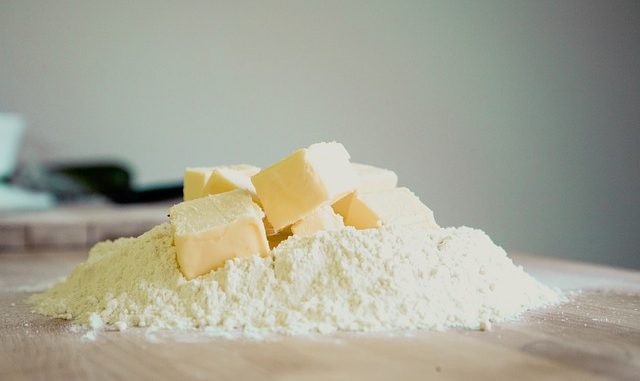
The use of shortening is a long-standing term for the function that an oil or fat performs in baking, in confectionary and fried foods. These fats contributed a ‘short’ or tenderizing aspect to baked goods. The other benefit is to improve overall palatability and flavour in the finished product. Their addition prevents binding of the gluten in flour during mixing and baking. The other more general benefits to reference are to improve the volume, grain and texture of the final product.
The term is nowadays applied to any fat that remains solid at room temperature. Perhaps the most interesting aspect of using fat in baking is that before it was an established ingredient, all baked goods would have been produced from flour, water, salt and a leavening agent such as yeast or sourdough. Using just these four ingredients would have produced tortillas and chapatis which are still made using just these simple ingredients.
In physical rheology terms it is described as a quasi-plastic material which changes its viscosity from flowing liquid to a non-flowing liquid (Yilmaz & Ogutcu, 2015).
Lard As the Original Shortening Agent
The classic shortening is lard. Shortening never refers to butter but margarine however butter is added as a fat. We can also consider oils including the liquid sorts such as olive oil, rapeseed oil and soybean. The plastic fats include margarine etc.
Whatever your viewpoint, a shortening is added to improve the sensory property of any baked good not least of all biscuits. They are also added as a functional ingredient too. For example they improve dough handling and their ease of handling and processing in sophisticated machinery.
Shortenings come in a variety of shapes and sizes depending on their application. A number are described here which you can find in any grocer:-
Powders – the higher melting fats and oils which are spray chilled and dried into powders. These fats are also flaked. It improves their dispersibility, handling and encapsulation in a host of baked food products. Encapsulation helps delay their release into the finished product during a process. It also offers protection from damage.
Plasticized shortenings– these are all-purpose, emulsified/non-emulsified animal or vegetable blends or mixes of all. They are preferred in food processors and food service manufacturing. Many shortening of this type are intended for a range of baking applications including cakes, biscuits, puff pastry and a multitude of baked goods.
Flakes – fats which are hard, butters, have hard emulsifiers, have high melting points and so tend to be flaked. The format helps with handling, the need for rapid melting and are exploited in many different recipes and formulations.
Liquid shortenings – Pumpable liquid shortenings are usually fluid suspensions consisting of a hard fat alongside a high melting emulsifier dispersed in a liquid oil. They are often added at room temperature or even in colder temperature processes where metering is required.
Beads – irregularly shaped particles of fat for metering. They are ideal for use in screw feeders and can be mixed with other ingredients to form a kind of stabilised intermediate.


Leave a Reply